
The Sanskrit terms ‘Ayush’ and ‘Veda’ combine to form the word Ayurveda. ‘Ayush’ is the Sanskrit word for life, while ‘Veda’ is the Sanskrit word for science. As a result, Ayurveda is known as ‘The Science of Life.’ It is not just a therapeutic approach, but also a way of life that will keep you healthy and free of all health complications. When it comes to addressing health disorders, notably diabetes, this 5000-year-old approach is a proven science on which one may completely rely’
Diabetes Diagnosis from the Ayurveda Perspective – Types of Diabetes

Diabetes is known as ‘Madhumeha’ in Ayurveda. Phlegm (Kapha), heat (Pitta), and toxic mucus (Aama), as per Ayurveda, cause obstructions in the pancreas, preventing insulin secretion. Insulin resistance is the term for this condition. Sugar levels in the blood and urine rise as a result. Feeling thirsty and frequent peeing, feeling very hungry or exhausted, sudden weight reduction, dry or itchy skin, tingling and numbness sensations, and fuzzy eyesight are all major symptoms.
Insulin-dependent diabetes is another name for type 1 diabetes diagnosis. It usually starts in childhood.
Diabetes diagnosis Type 2 is due to a lack of insulin synthesis, resulting in excessive blood sugar levels. It is the most common type of diabetes diagnosis in adults, contributing to 95% of cases.
In both cases, one must adhere to a particular lifestyle that is tailored to each person’s medical status and must be preserved for the rest of one’s life. These diabetes problems can be treated with an Ayurvedic approach.
Diabetes – Ayurveda vs Modern Medicine
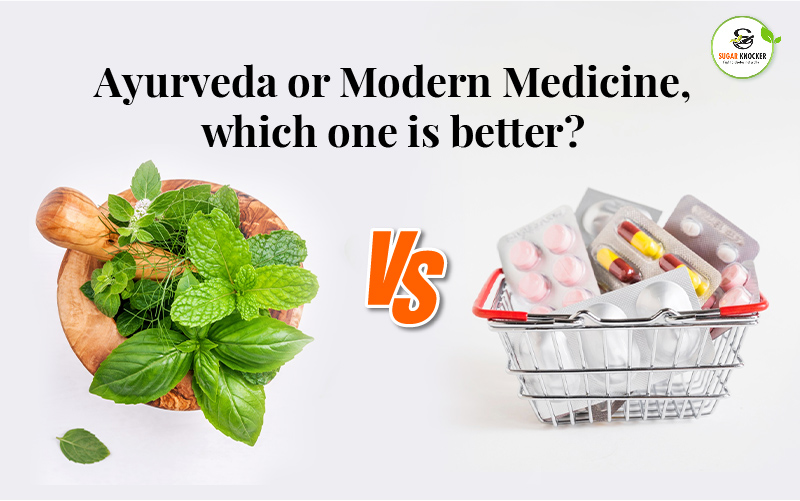
Diabetes mellitus is a type of disease that affects the body’s metabolism. It’s not possible to cure it just by reducing blood sugar levels.
In comparison to modern medicine, Ayurveda takes a distinct approach to diabetes. It genuinely revitalizes the body, not just in terms of “controlling” blood sugar levels but also in terms of preventing subsequent issues.
Ayurvedic Diabetes Treatment
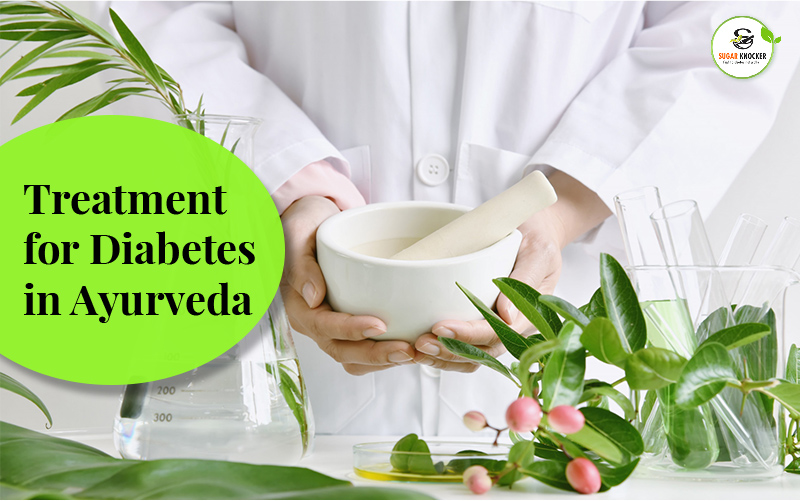
Detoxification: A unique anti-clog detoxification therapy is used to boost metabolism and eliminate obstructions.
The rejuvenation procedure with Rasayana herbs is the secondary focus, and it aims to enhance and increase pancreas functioning as well as rejuvenate cells and tissues. As a result, all organs’ regular functions are restored.
The final goal is to keep blood sugar levels in check in a logical way. To healthily control blood sugar levels all our lives, herbal mixtures and food programs are advised.
Practicing this approach will assist you to lower your allopathy tablet dosage and eventually eradicate it. Diet and lifestyle play a big part in keeping ailments at bay and boosting overall health. A diabetes food plan is a chart that outlines how much and what types of food you can consume at meals and snacks.
Because there is no such thing as an ideal meal, a healthy diet requires a variety of foods and careful portion control. Also, to give the finest quality nutrients possible, ensure that each individual’s specific preferences from each food category are made.
• Limiting high-sugar meals
• Consuming smaller quantities throughout the day are all part of a healthy diabetic diet.
• Consuming a range of whole-grain foods and veggies every day
• Consuming a range of whole-grain foods and veggies every day
• Eating less fat
• Consuming less fat
Again, simply eating a healthy diet is insufficient. Frequent physical activity is important for everybody, but it is especially important for people with diabetes and even those who are at risk of developing it. The idea would be to become proactive by doing things that one enjoys, whether it’s farming, tennis, or going for walks; any type of physical activity is required.
Natural Ayurvedic herbs such as amla and turmeric can assist enhance metabolism and reduce cellular stiffness. Fenugreek extract also aids in the uptake of sugar from the stomach into the bloodstream, and meshashrungi extracts have the ability to regenerate and repair pancreatic cells, as well as enhance pancreatic functions, encouraging the natural production of insulin.
Although today’s lifestyle is demanding, so for the majority of the population, health has taken a backseat, adopting these measures will help to create a brighter tomorrow by curing Diabetes diagnosis at its source.
Ayurvedic Treatment for Type 1 Diabetes

Type 1 Diabetes is especially difficult to manage due to the lack of diabetes-controlling hormone synthesis by the pancreas. A tight routine is required for treatment, which often involves a carefully calibrated diet, organized physical exercise, numerous daily blood glucose tests, and multiple daily hormone injections. In Diabetes diagnosis Type 1 Treatment [Panchakarma Therapy], being physically healthy and exercising on a regular basis, maintaining a stable weight, and eating a balanced diet are all beneficial. Although diet and exercise are important in the management of Type 1 Diabetes, they cannot revert the condition or abolish the need for a diabetes-controlling hormone.
Ayurvedic Treatment for Type 2 Diabetes
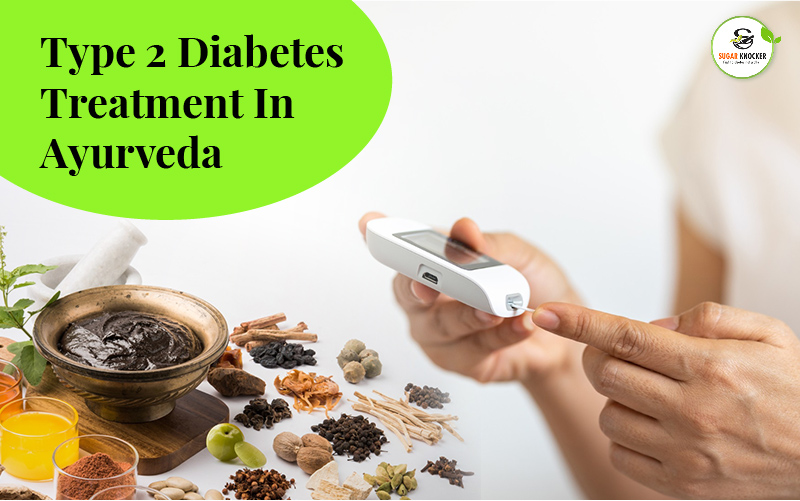
Ayurveda treatment relies on a complete transformation in a person’s lifestyle. People with diabetes diagnosis type 2 are typically robust and obese (sthula and balavan), and their therapy begins with bio-cleansing techniques or panchakarma targeted at a fat loss (apatarpana chikitsa) to guarantee that no more complications arise. After that, a blend of herbal medicines (aushadhi), dietary adjustments (aahar), and lifestyle changes are used to treat the patient (vihar).
Ayurvedic Herbal Remedies
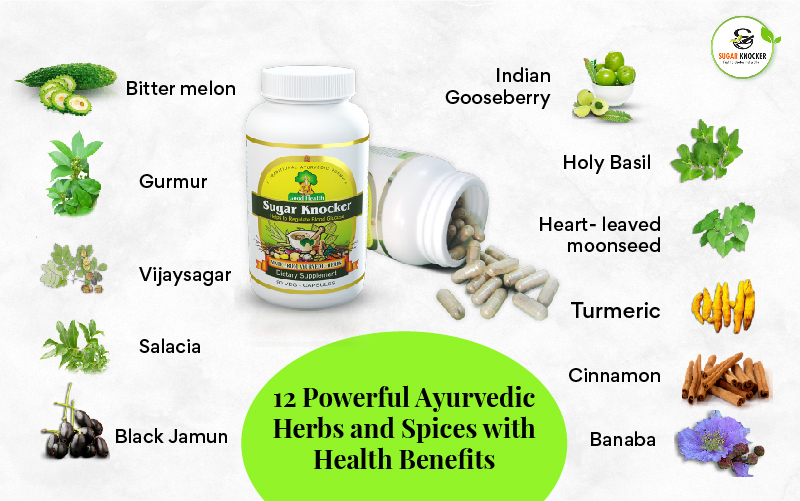
Ayurveda also recommends the use of certain herbs to help with diabetic therapy. Herbal medicines for metabolic syndrome treatment have piqued the interest of a number of researchers.
Turmeric: Turmeric powder has anti-allergic, anti-cancer, anti-inflammatory, and anti-diabetic properties, making it one of the most powerful natural anti-diabetic medications. It helps to purify the blood, functions as a channel activator, helps to reduce insulin sensitivity, and so makes glucose entry into the cells easier. When turmeric is coupled with aloe vera, it has a powerful effect.
Saptrangi: This is a fantastic diabetes cure. It’s a tree whose bark helps to keep blood sugar levels under control. It has been utilized in Ayurveda for centuries and is studied extensively at western herbal institutes. It has been proven that the herb contains anti-diabetic properties.
Vizaysaar: This is a huge tree with substantial anti-diabetic effects in its bark. Individuals with diabetes diagnosis could store some water in a wooden glass overnight and drink it the next morning. After about a month, if the color of the water does not shift to brown, the glass is changed. Extraction of the miraculous tree’s bark is used to help with diabetes.
Bilva: The roots of this tree are encased in three leaves. Any tree with three leaves, according to Ayurveda, is heavenly and the home of Lord Brahma, Vishnu, and Maheshwar. Irritable bowel syndrome is helped by the fruits of this tree. Diabetics benefit greatly from bilva leaves. To maximum potency, the leaves are dried, processed into a powder, and blended with some other herbs.
Gurmar: Gurmar is a Hindi word that means “sugar destroyer.” It’s a thread with sugar-regulating characteristics that have been utilized in Ayurveda for ages. According to a recent study, it contains Gymnemic acid molecules, which are believed to be responsible for its anti-diabetic effects. In the intestines, they create compounds with sugar molecules, blocking them from entering the bloodstream. As a consequence, it’s good for controlling blood sugar levels.
Karela: The juice of this vegetable is quite effective in decreasing and treating diabetes problems. 30 ml of Karela juice first thing in the morning on an empty stomach is suggested for optimum results. When coupled with Amla juice, it produces the best results.
Tulsi: Tulsi is a sacred plant in India because of its exceptional healing powers. The usage of tulsi leaves on a regular basis helps to control blood sugar levels. It also helps with malignancies, respiratory and bacterial infections, throat irritation, coughs, and other ailments.
Fenugreek: Fenugreek is a spicy, pungent plant that helps to reduce excess kapha in the body. Fenugreek is an excellent herb for lowering cholesterol and blood sugar levels. Fenugreek seed powder is often used to help keep blood sugar levels in control.
Neem: Neem has long been used in Ayurveda to cleanse the blood and strengthen the immune system. It helps to keep blood glucose levels in a healthy range.
Guggulu: Guggulu has been used for millennia in Ayurveda to gradually detoxify the body and stimulate adequate nutrients by boosting the body’s metabolism and assisting in the evacuation of waste materials. It aids in the elimination of excess sugar and fat from the body due to its peeling propensity.
Amla is nature’s super antioxidant and the greatest source of vitamin C on the earth. The vitamin C content of amla is 30 times that of an orange. It inhibits the emergence of diabetes diagnosis by slowing the aging process.
Sugarcane
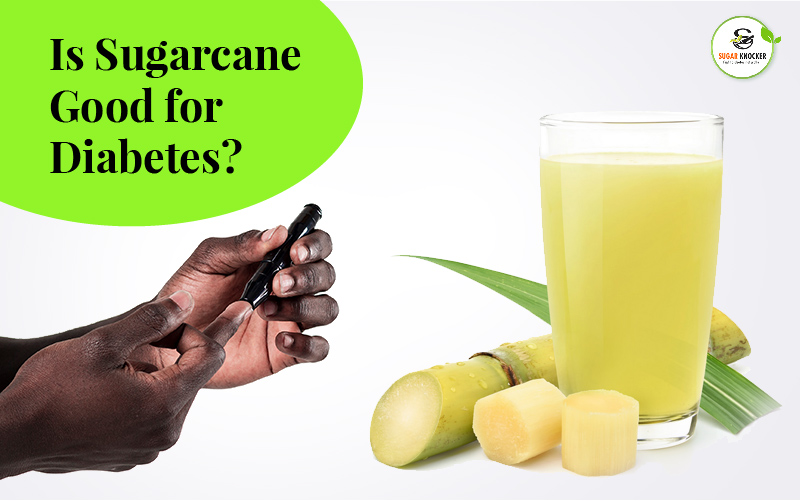
Sugarcane juice is a syrupy, sweet beverage that is popular in India, Africa, and Asia. This drink is being sold as an all-natural beverage with a broad range of health advantages as it becomes more widespread. It’s used to cure liver, kidney, and other disorders in traditional Eastern medicine.
Some people believe it can even assist with a diabetes diagnosis, which may surprise you. Street vendors frequently sell it mixed with lime or some other kind of juices and served over ice as a refreshing drink. Cane sugar, brown sugar, molasses, and jaggery are all made from it. Sugarcane can also be used to manufacture rum.
Sugarcane juice is not the same as pure sugar. It’s made up of 70–75 percent water, 10-15 percent fiber, and 13–15 percent sugar (sucrose), which is the same as table sugar. In reality, it produces the majority of the world’s table sugar. It’s also a great source of phenolic and flavonoid antioxidants in its natural state. The presence of antioxidants is one of the main reasons why some people believe it offers health benefits.
It has been examined for its hydrating benefits because it includes electrolytes like potassium. Sugarcane juice was found to be equally beneficial as a sports drink in increasing exercise performance and rehydration in a study of 15 cycling riders. During the activity, however, it elevated athletes’ blood sugar levels. Its advantages were mostly attributed to its carbohydrate content and capacity to replenish energy stores in muscles following an exercise.
Ghee

Individuals with diabetes must be cautious about what they consume because food has a direct impact on blood sugar levels. Any use of oils and ghee by diabetics has long been a source of debate. Ghee, according to dieticians, is a diabetic’s medicine. Ghee, particularly Vedic ghee made from cow’s milk, has been shown to help regulate blood sugar levels by aiding glucose metabolism with its fatty acids.
Ghee is high in linolenic acid, which helps to lower the risk of cardiovascular disease. Another advantage of ghee is that it promotes bowel health and smoothness. Ghee’s vitamins (A, D, and K), butyric acid, and antioxidants aid to strengthen the immune system, which is compromised in diabetics.
Butter

Saturated fats in butter and other foods have been avoided for years due to their strong link to cardiovascular disease. Consuming a high-saturated-fat diet increases blood lipids, raising the chances of lipid occlusion of arteries, which can lead to significant problems such as heart attack and stroke.
Alcohol

Heavy drinking can induce the accumulation of specific acids in the blood, which can have serious health repercussions, especially in diabetics. Finally, drinking alcohol might exacerbate diabetes-related medical concerns like fat metabolic issues, nerve damage, and eye illness.
Conclusion:
The most common behaviors and strategies for managing diabetes include dietary planning and lifestyle changes. It’s possible to fall into negative habits in today’s frantic world. The stressful pattern can lead to physical problems like hypertension, heart problems, furious binge eating (which can contribute to obesity), and high blood cholesterol. All of these eventually add up as diabetes diagnosis criteria; but, by taking charge of your routine and making good lifestyle choices, you can prolong the disease’s emergence. Eat a healthy, well-balanced diet that is low in sugars, incorporate more green leafy vegetables into your diet, and never stop practicing Yoga are a couple of things you should keep in mind if you are diabetic.
